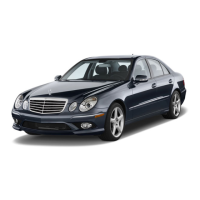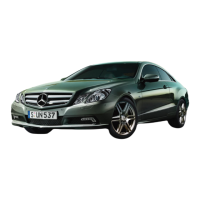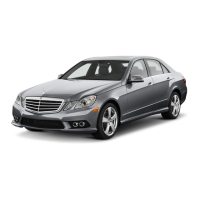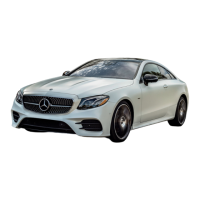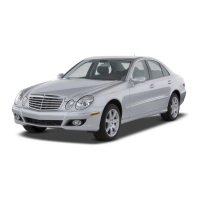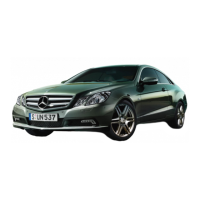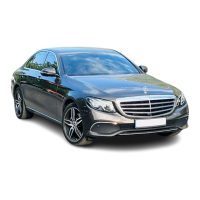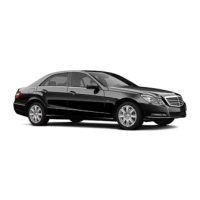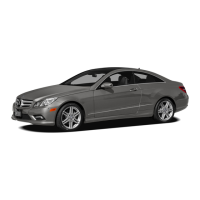Observe the legal requirements for the rele-
vant countries when towing and tow-starting.
It is better to have the vehicle transported
than to have it towed.
If the vehicle has suffered transmission dam-
age, have it transported on a transporter or
trailer.
When towing a vehicle with an automatic
transmission, the transmission must be in
position N.
The battery must be connected and charged.
Otherwise, you:
R
cannot turn the key in the ignition lock to
position 2
R
cannot shift the transmission to position
N on vehicles with automatic transmission
i
Deactivate the automatic locking feature
before the vehicle is towed (Y page 96). You
could otherwise be locked out when push-
ing or towing the vehicle.
Deactivate tow-away protection before the
vehicle is towed away (Y page 84).
Fitting/removing the towing eye
Fitting the towing eye
G
WARNING
The exhaust tail pipe may be extremely hot.
There is a risk of burning when removing the
rear cover.
Do not touch the exhaust tail pipe. Use
extreme caution when removing the rear
cover.
Towing eye covers (example: Saloon)
Vehicles with a trailer tow hitch: if you intend
to use the vehicle for towing, fold out the ball
coupling and connect the towbar to it
(Y page 261).
The brackets for the screw-in towing eyes are
located in the bumpers. They are under the
covers at the front and at the rear on vehicles
without a trailer coupling. On vehicles with a
trailer coupling, the bracket is at the front
under the cover.
X
Remove the towing eye from the vehicle
tool kit (Y page 383).
X
Press the mark on cover : inwards in the
direction of the arrow.
X
Remove cover : from the opening.
X
Screw the towing eye in clockwise to the
stop and tighten it.
Removing the towing eye
X
Loosen the towing eye and unscrew it.
X
Attach cover : to the bumper and press
until it engages.
X
Place the towing eye in the vehicle tool kit.
Towing and tow-starting
397
Breakdown assistance
Z
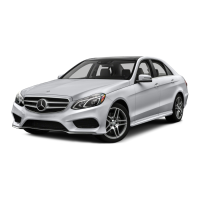
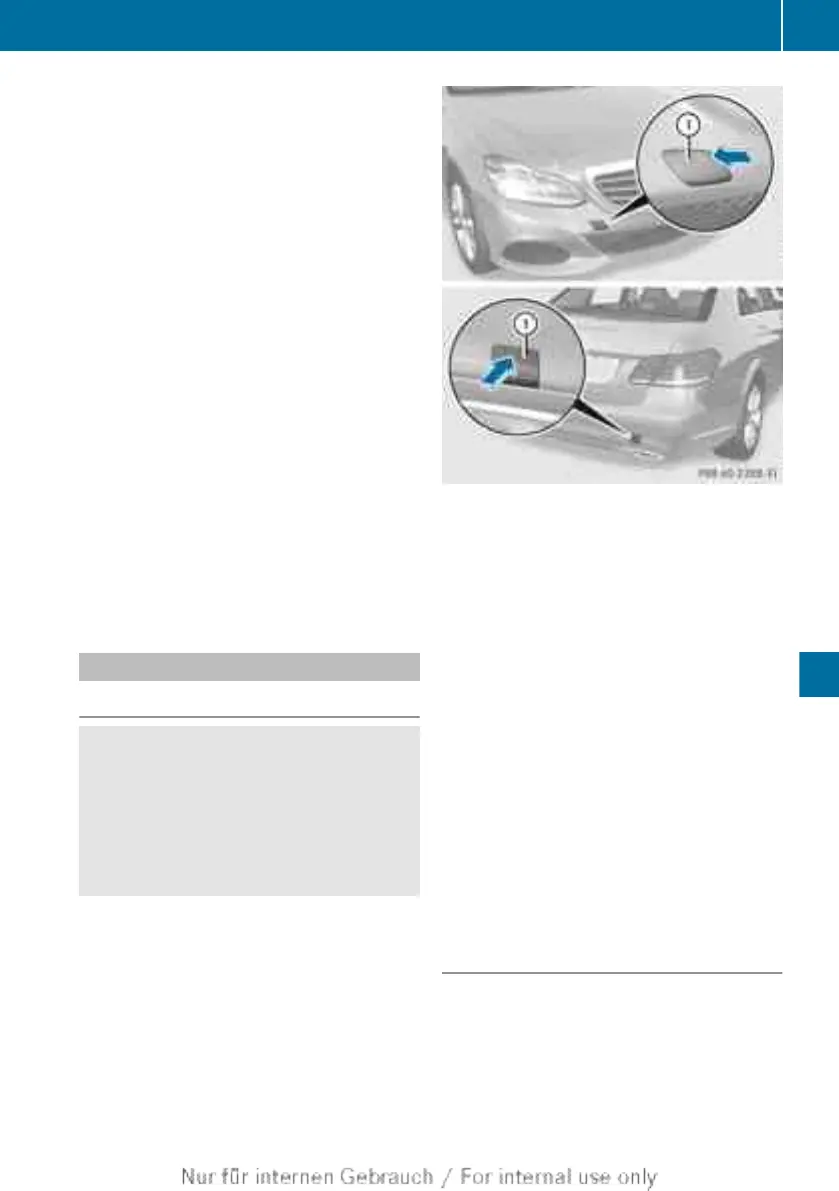